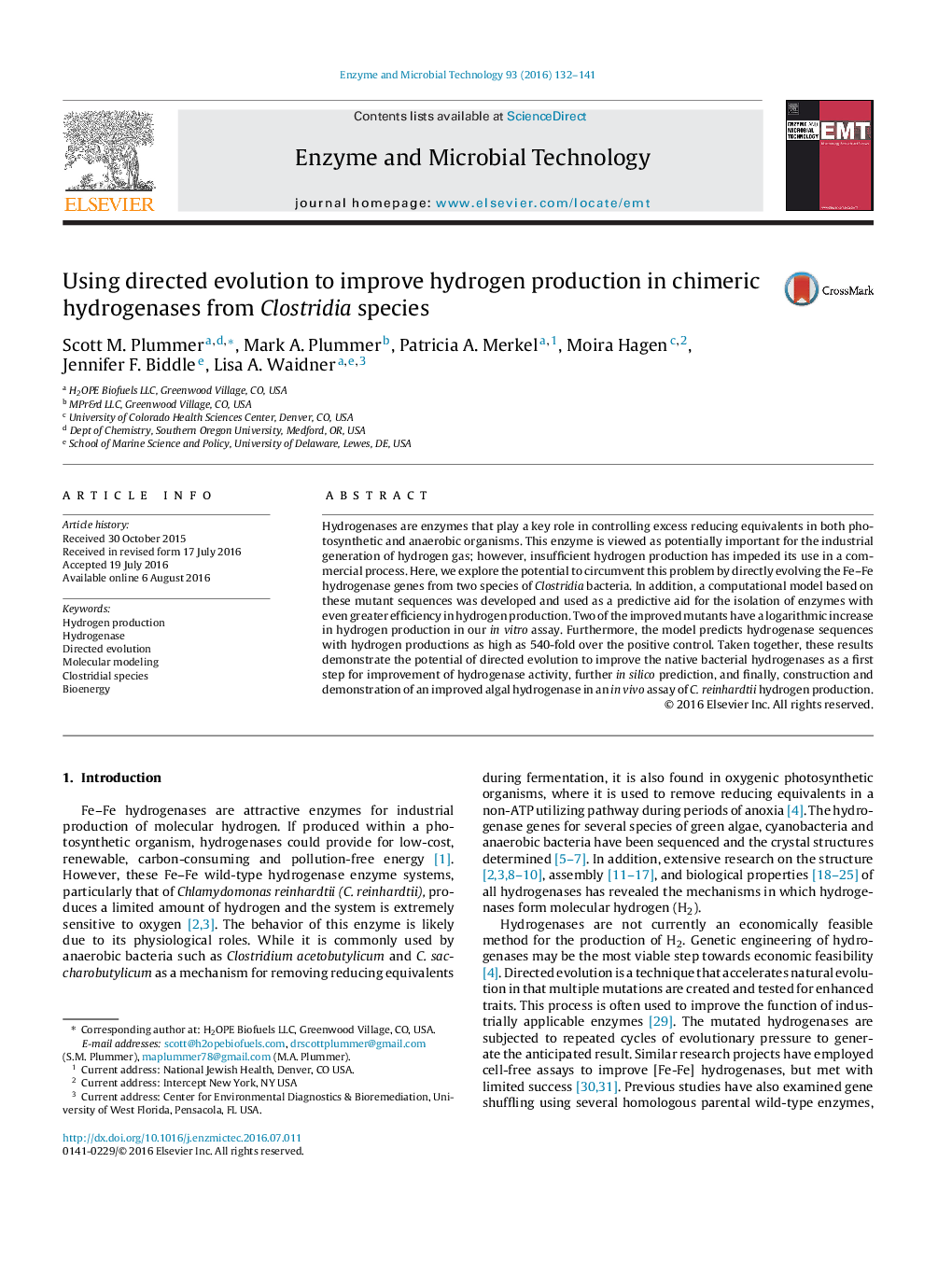| Article ID | Journal | Published Year | Pages | File Type |
|---|---|---|---|---|
| 6488219 | Enzyme and Microbial Technology | 2016 | 10 Pages |
Abstract
Hydrogenases are enzymes that play a key role in controlling excess reducing equivalents in both photosynthetic and anaerobic organisms. This enzyme is viewed as potentially important for the industrial generation of hydrogen gas; however, insufficient hydrogen production has impeded its use in a commercial process. Here, we explore the potential to circumvent this problem by directly evolving the Feâ¿¿Fe hydrogenase genes from two species of Clostridia bacteria. In addition, a computational model based on these mutant sequences was developed and used as a predictive aid for the isolation of enzymes with even greater efficiency in hydrogen production. Two of the improved mutants have a logarithmic increase in hydrogen production in our in vitro assay. Furthermore, the model predicts hydrogenase sequences with hydrogen productions as high as 540-fold over the positive control. Taken together, these results demonstrate the potential of directed evolution to improve the native bacterial hydrogenases as a first step for improvement of hydrogenase activity, further in silico prediction, and finally, construction and demonstration of an improved algal hydrogenase in an in vivo assay of C. reinhardtii hydrogen production.
Related Topics
Physical Sciences and Engineering
Chemical Engineering
Bioengineering
Authors
Scott M. Plummer, Mark A. Plummer, Patricia A. Merkel, Moira Hagen, Jennifer F. Biddle, Lisa A. Waidner,
